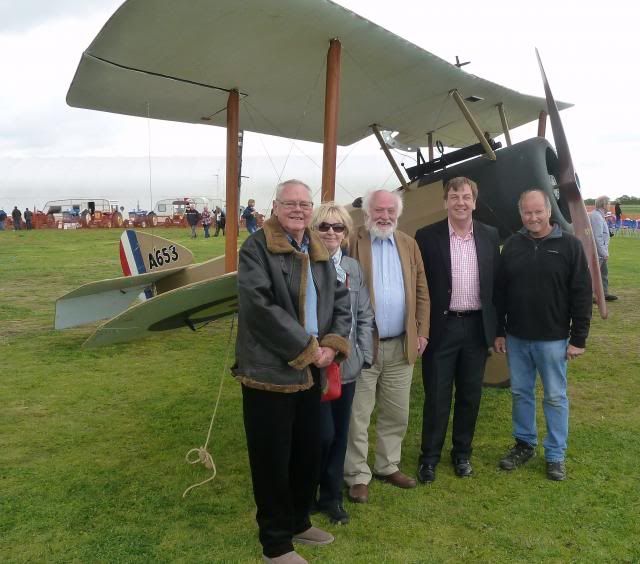
John Whittingdale attended the fly-in at Stow Maries Aerodrome, the last surviving First World War airfield in the country. Stow Maries Aerodrome is a Great War Aerodrome set in the rural Essex countryside.
The Aerodrome was in use from 1916 to 1919 as a home defence station in the war against Zeppelin and German aeroplane raids. It has many of its original buildings in situ which are currently undergoing restoration to bring the site back to its 1918 appearance. It also boasts a wildlife walk which was the winner of Maldon District Council Conservation and Design Award 2010.
Following a period of organisation and training at Stow Maries the first recorded operational flight took place from the aerodrome on the night of 23rd/24th May 1917 when Ridley (now promoted to Captain) and Lieutenant G Keddie were ordered aloft in response to a large Zeppelin raid targeting London. They scored no success on that occasion but as time went on the amount of operational flights grew as did the aircraft establishment of the station.
Both day and night patrols are recorded but it was to be “Flight at Goldhanger that claimed the Squadrons first confirmed destruction of an enemy machine, when during the early hours of 17th June 1917, 2nd Lieutenant L. P Watkins was credited with the downing of Zeppelin L48 at Theberton in Suffolk. This was to be the last Zeppelin brought down in Great Britain during the war. One of the stations busiest days was 7th July 1917 when aircraft were ordered after a formation of twenty two Gotha bombers heading for London. Stow Maries pilots engaged the enemy aircraft in a running fight and scored several hits. Fire was returned however and the ground crews found a number of bullet holes in the returning aircraft. In the summer of 1917
Flight was posted from Rochford to Stow Maries effectively doubling the size of the station. At the same time the stations first commander Claude Ridley departed to form a new Squadron at Rochford. Day and night patrols continued but it was the fragility of the aircraft of the period and the inexperience of the young pilots that caused the loss of aircrew from the station. June 1917 saw the loss of 2nd Lieutenant Roy Mouritzen from Western Australia in a flying accident and July of the same year serious injury to Captain E Cotterill through engine failure. Captain B Quinan crashed at Woodham Walter on a training flight and was severely injured. He died in July 1918.
1918 saw continued losses at the aerodrome, Captain A Kynoch in an aerial collision at night, Lieutenant E Nicholls in another flying accident on the aerodrome and finally 2nd Lieutenant C Milburn in an accident near the edge of the flying field. Lieutenant Nicholls and 2nd Lieutenants Mouritzen and Milburn are buried in the churchyard of St Mary and St Margaret, Stow Maries, as is Stow’s first commanding officer, Claude Ridley who died as a Wing Commander during the second World War, from natural causes. During the latter half of 1918 building continued and the aerodrome took on the familiar form it still holds today. The Headquarters Flight moved in from Woodham Mortimer and Stow Maries became a very busy place. An RAF survey at this time recorded 219 personnel and 16 aircraft. Completion of the aerodrome was scheduled for December 1918 but the war ended in November and some of the buildings were never completed.
Flight moved to Stow Maries from Goldhanger in February 1919 bringing the total staffing levels to around 300 personnel and 24 aircraft, the first time the whole Squadron had been located at one Station. It signalled the end for the Essex aerodrome however and the following month the Squadron moved to Biggin Hill in Kent, leaving the site empty The site returned to agriculture and only in 1940 did an RAF aircraft return to the airfield when a 242 Squadron Hurricane force landed with combat damage. The following years have seen the buildings used for both agriculture and accommodation. They now find themselves subject of a sympathetic restoration project to restore the aerodrome to its former glory.
John is pictured with Cllr Bryan Harker, Cllr Brenda Harker and Cllr Bob Boyce, Leader of Maldon District Council together with Russell Savory, the owner of the Aerodrome and whose initiative it was to restore it.


